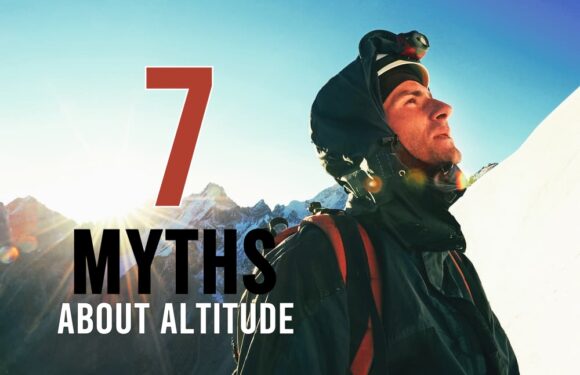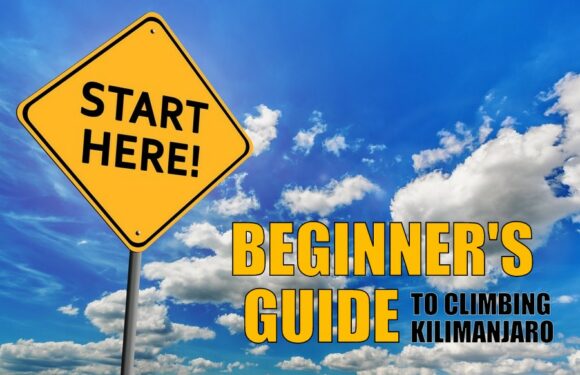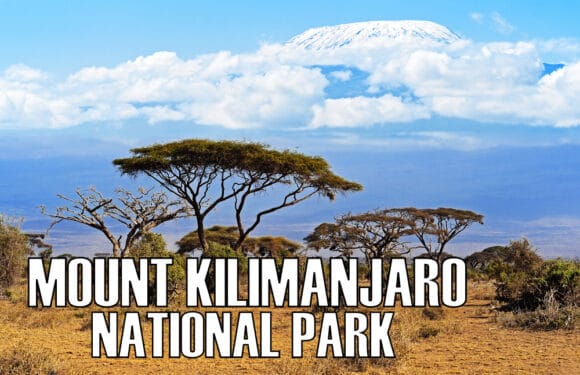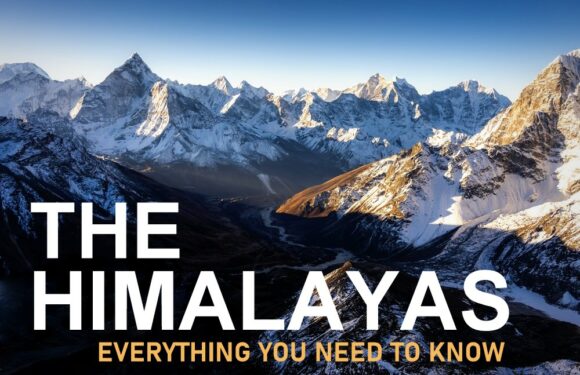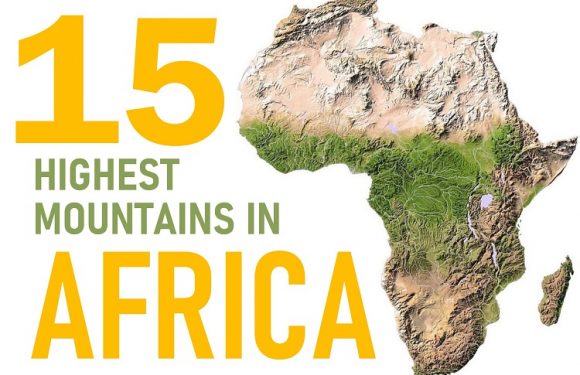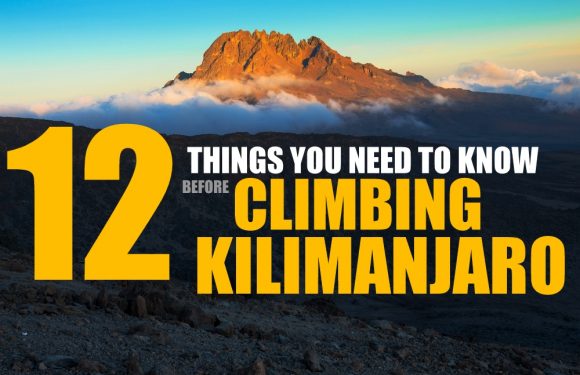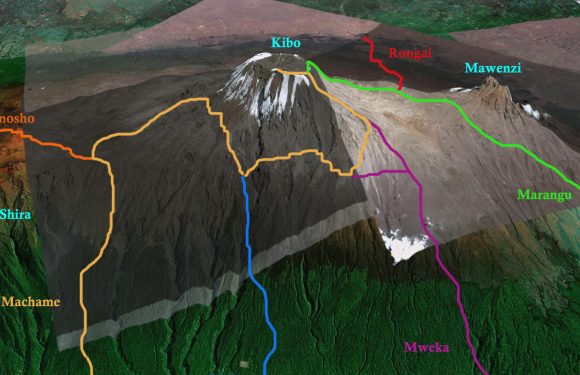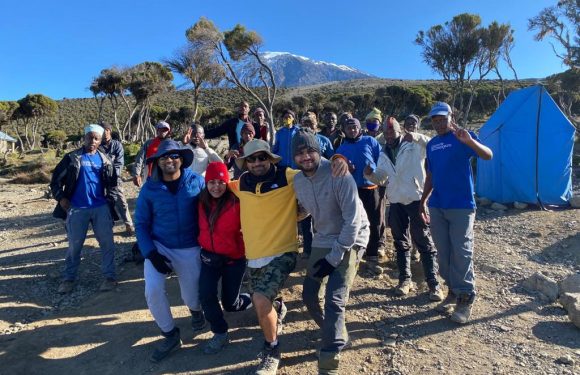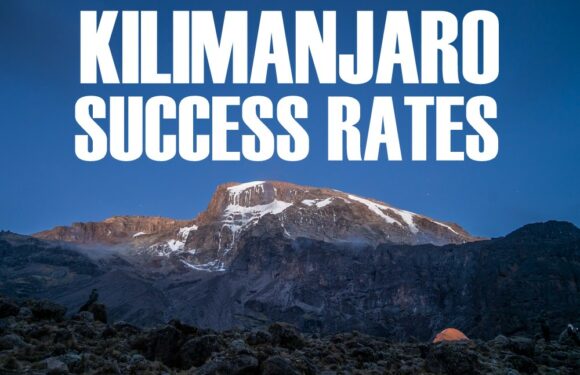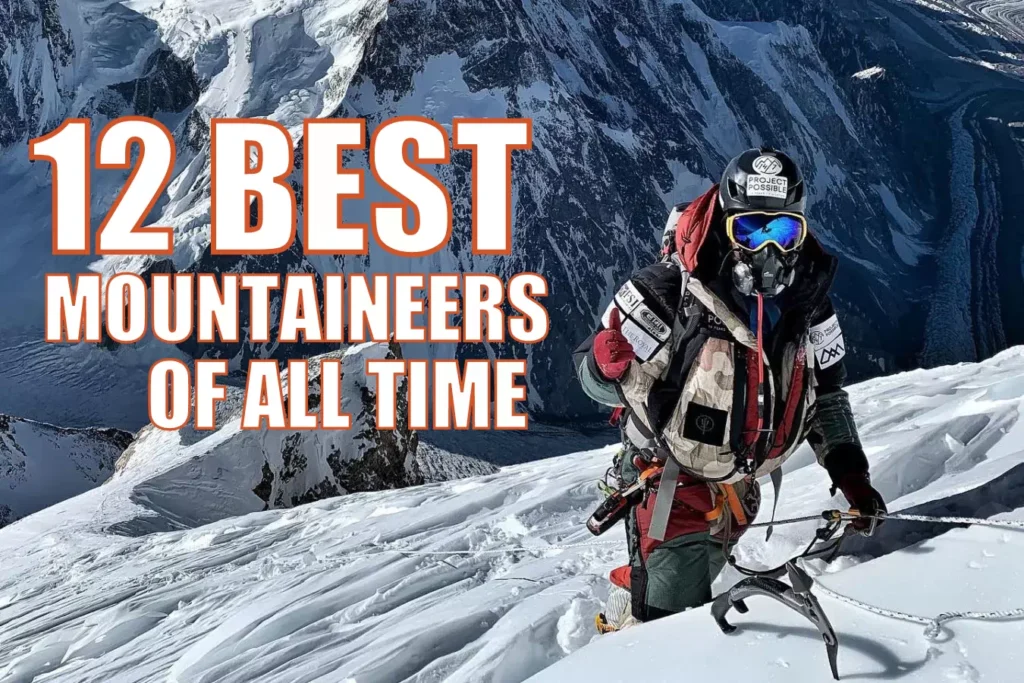
Mountaineering is an extreme sport that demands skill, courage, and endurance. It involves climbing high-altitude peaks, often in challenging weather conditions, using specialized gear and techniques.
Over the years, there have been many mountaineers who have pushed the limits of the sport and achieved legendary status for their achievements. However, it is important to note that there are countless other mountain climbers who could be included on this list, and the individuals discussed here are only a small selection of the many incredible alpinists who have left their mark on the sport. Each of these mountaineers has their own unique story, and their accomplishments serve as a testament to the diversity and richness of the mountaineering experience.
Here are 12 of the best mountain climbers of all time and their outstanding feats.
1. Sir Edmund Hillary
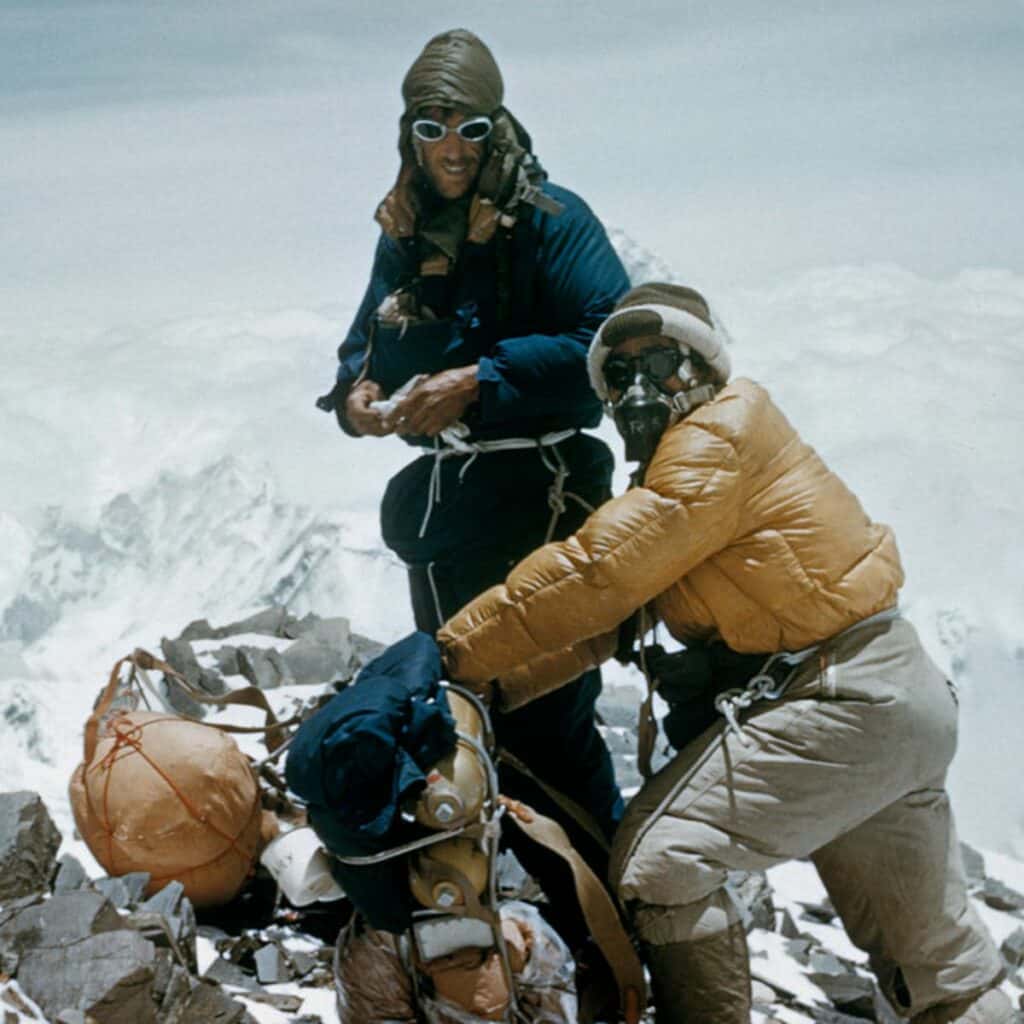
Sir Edmund Hillary was a New Zealand mountaineer who, along with Tenzing Norgay, became the first person to reach the summit of Mount Everest in 1953.
Born in Auckland, New Zealand, in 1919, Hillary grew up with a love of the outdoors and began climbing in the Southern Alps at an early age. After serving in World War II, he returned to mountaineering and quickly established himself as one of the leading climbers of his generation.
“It is not the mountain we conquer but ourselves.”
-Edmund HIllary
In addition to his historic climb of Everest, Hillary made many other notable ascents during his career, including the first ascent of Aoraki/Mount Cook, the highest peak in New Zealand, in 1948. He was also involved in numerous expeditions to the Himalayas and Antarctica.
Hillary’s achievements and contributions to mountaineering earned him numerous awards and honors, and he remained a beloved and respected figure in his home country until his death in 2008. He was a tireless advocate for environmental causes and humanitarian work.
2. Tenzing Norgay
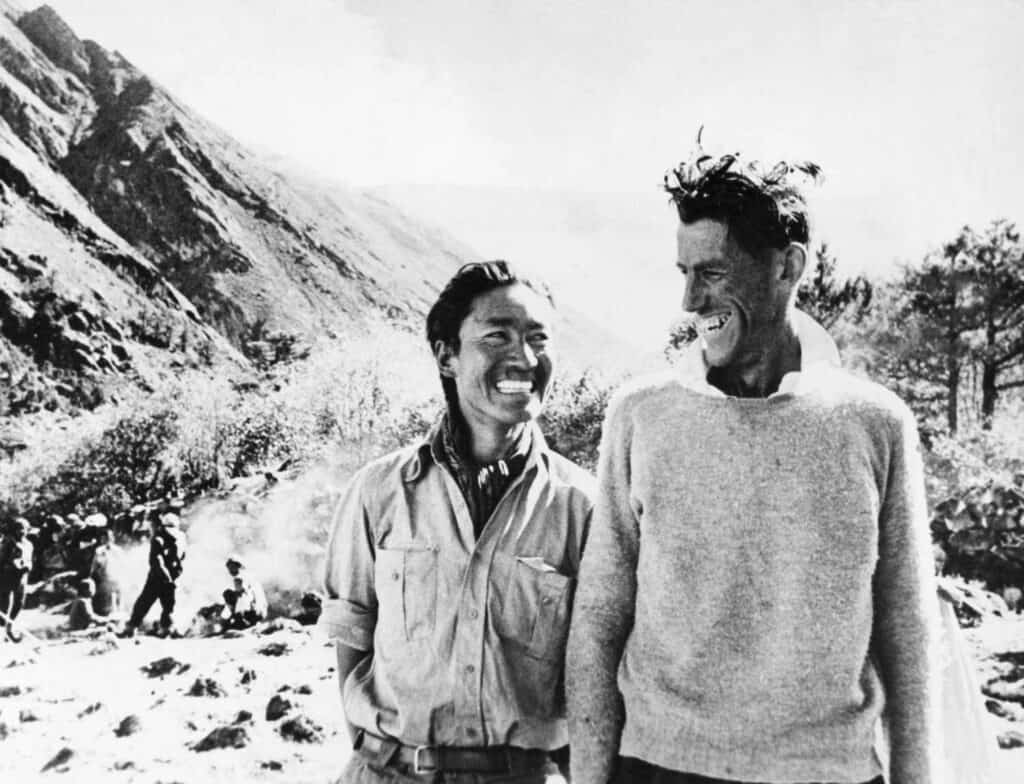
Tenzing Norgay was a renowned Nepalese mountaineer who is best known for his historic achievement of being the first person to summit Mount Everest, along with Sir Edmund Hillary, on May 29, 1953. This was a milestone in the history of mountaineering and inspired generations of climbers to follow in his footsteps.
He went on to lead several expeditions to other peaks in the Himalayas, including Makalu, Cho Oyu, and Kangchenjunga.
In recognition of his contributions to mountaineering, Tenzing Norgay received several awards and honors during his lifetime. He was awarded the George Medal by the British government in 1953 and was also conferred the Padma Bhushan, one of India’s highest civilian honors, in 1959.
He remained actively involved in mountaineering until his death in 1986, at the age of 71.
3. Reinhold Messner
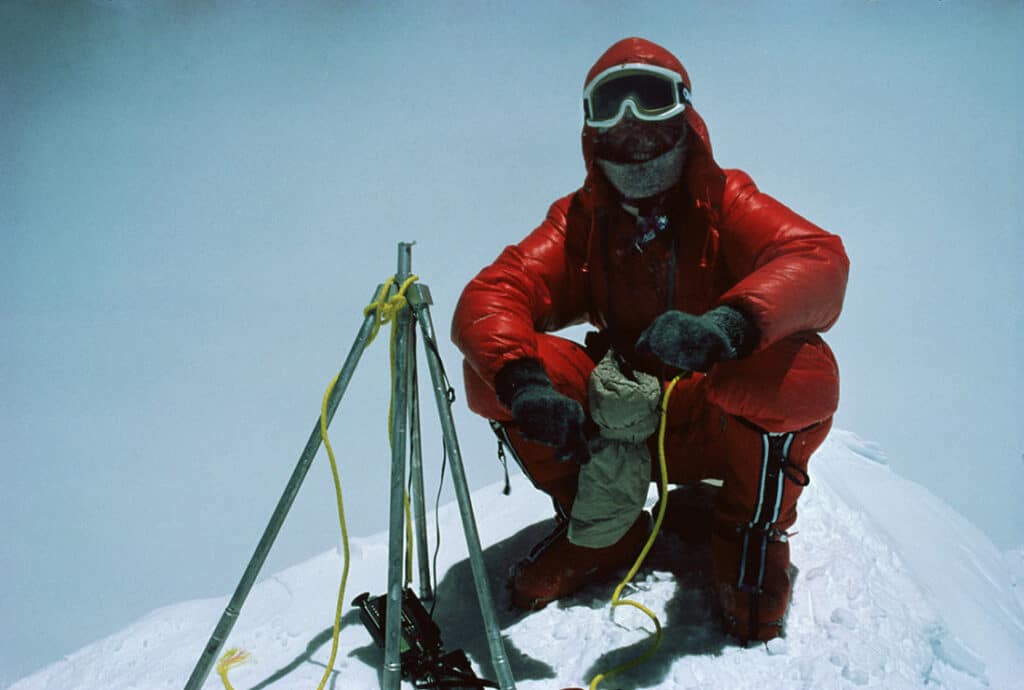
Born in Italy in 1944, Reinhold Messner began climbing in the Dolomites at an early age and became known as a prodigious talent.
Over the course of his career, he made numerous groundbreaking ascents, including the first solo ascent of Mount Everest without supplemental oxygen in 1980.
By climbing mountains we were not learning how big we were.
We were finding out how breakable, how weak and how full of fear we are.”
-Reinhold Messner
Messner’s accomplishments also include the first ascent of the north face of the Eiger, the first ascent of K2 without supplemental oxygen, and the first ascent of all 14 of the world’s 8,000-meter peaks, a feat that has been dubbed the “Crown of the Himalayas.”
Messner’s approach to mountaineering was characterized by his focus on lightweight, minimalist equipment and his emphasis on self-sufficiency and technical ability. He was also an outspoken critic of the commercialization of mountaineering and the use of fixed ropes and other artificial aids.
4. Lino Lacedelli
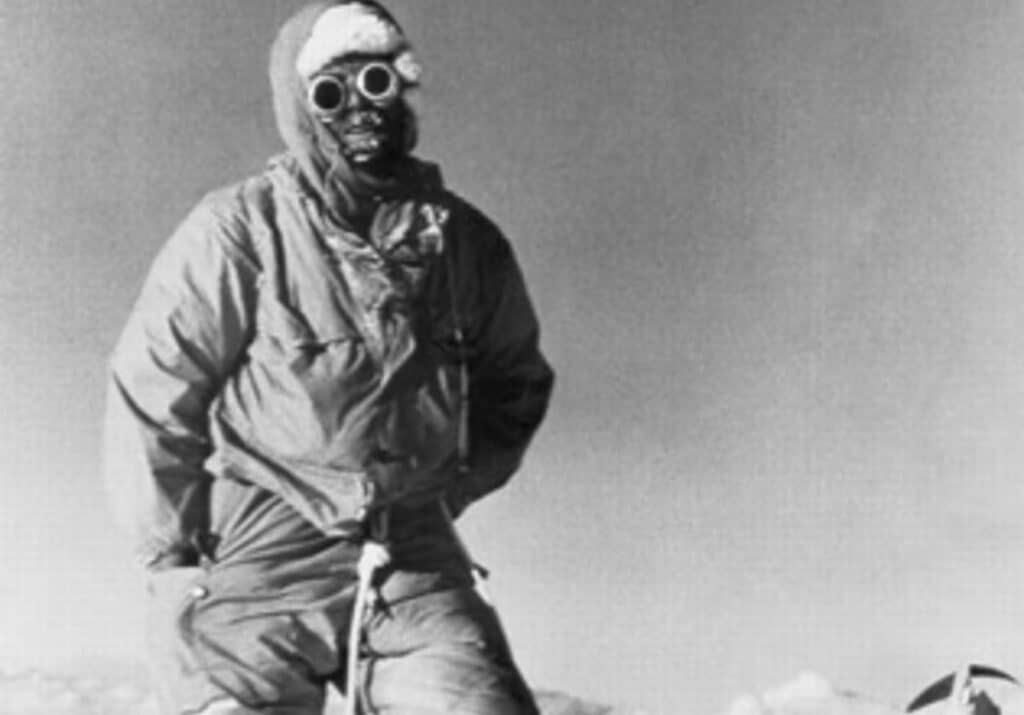
Lino Lacedelli was a legendary Italian alpinist who is best known for being the first person to summit K2, the second-highest mountain in the world, in 1954. The successful expedition to K2 was a landmark moment in the history of mountaineering and brought him international fame and recognition.
He went on to participate in several other expeditions, including an attempt to climb Makalu, the fifth-highest mountain in the world, in 1955.
Born on December 4, 1925, in Cortina d’Ampezzo, Italy, Lino Lacedelli grew up in the picturesque Dolomite mountains, which inspired his love for climbing. His passion for mountaineering began at an early age, and he quickly became known for his skills and determination.
He was awarded the Gold Medal for Civil Valor by the Italian government in 1954 and was also conferred the title of Cavaliere di Gran Croce, one of Italy’s highest civilian honors, in 2004.
5. Carlos Carsolio
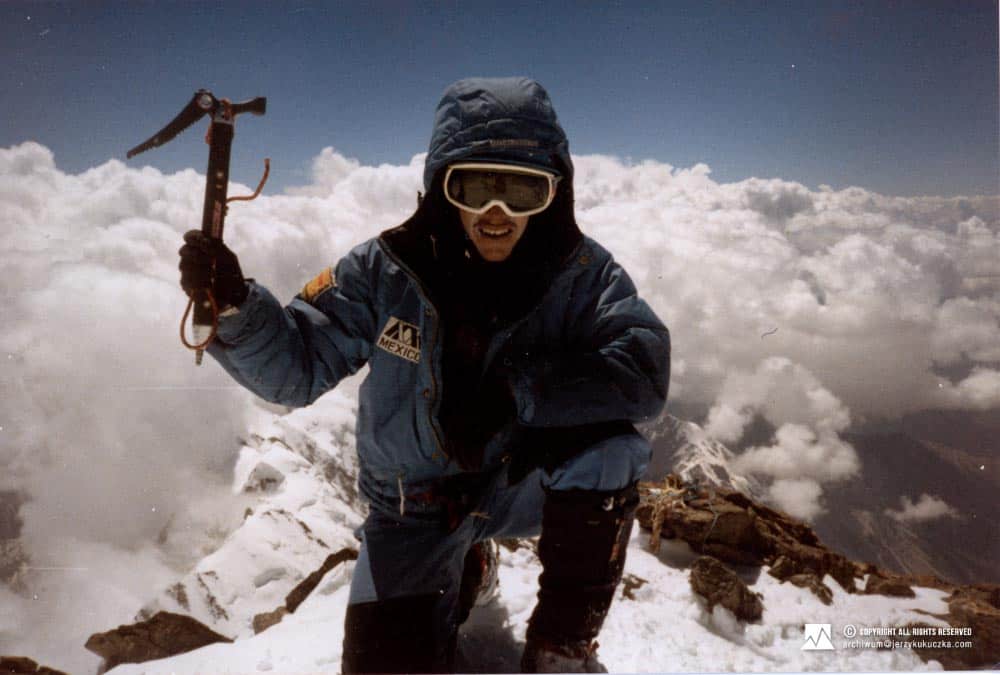
Carlos Carsolio is a Mexican mountaineer who is considered one of the greatest high-altitude climbers in history.
Born on March 4, 1962, in Mexico City, Carsolio’s first major climbing achievement came in 1985 when he successfully summited the 5,775-meter-high peak of Volcan de Colima, becoming the first Mexican to do so.
Over the years, Carsolio would go on to climb some of the most formidable mountains on the planet, including Mount Everest, K2, and Cho Oyu. He became the first person to summit the five highest peaks in the world, known as the “Big Five,” within a year. In 1994 when he climbed Mount Everest without the use of supplemental oxygen, becoming the third Mexican to do so.
In recognition of his contributions to the sport, Carsolio was awarded the National Sports Award in Mexico, and was inducted into the Mountaineering Hall of Fame.
6. Jerzy Kukuczka
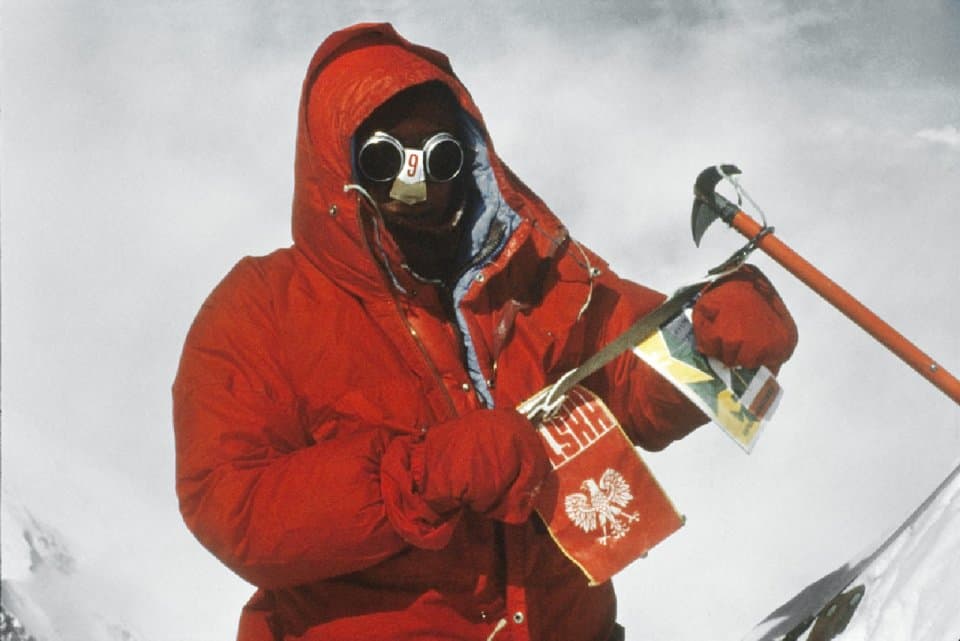
Jerzy Kukuczka was a Polish mountaineer whose climbing career began in the Tatra Mountains, a range located in southern Poland. Over the years, Kukuczka would go on to climb some of the most formidable mountains on the planet, including Mount Everest, K2, and Kangchenjunga.
Kukuczka’s most significant achievement came in 1987 when he became the second person in history, after Reinhold Messner, to climb all 14 peaks over 8,000 meters without the use of supplemental oxygen. He died in 1989 attempting to climb Lhotse, the fourth-highest mountain in the world.
He received the Piolet d’Or, the highest honor in mountaineering, in 1997.
He is also remembered through the Jerzy Kukuczka Foundation, which supports young climbers and promotes safe and responsible mountain climbing.
7. Nims Purja
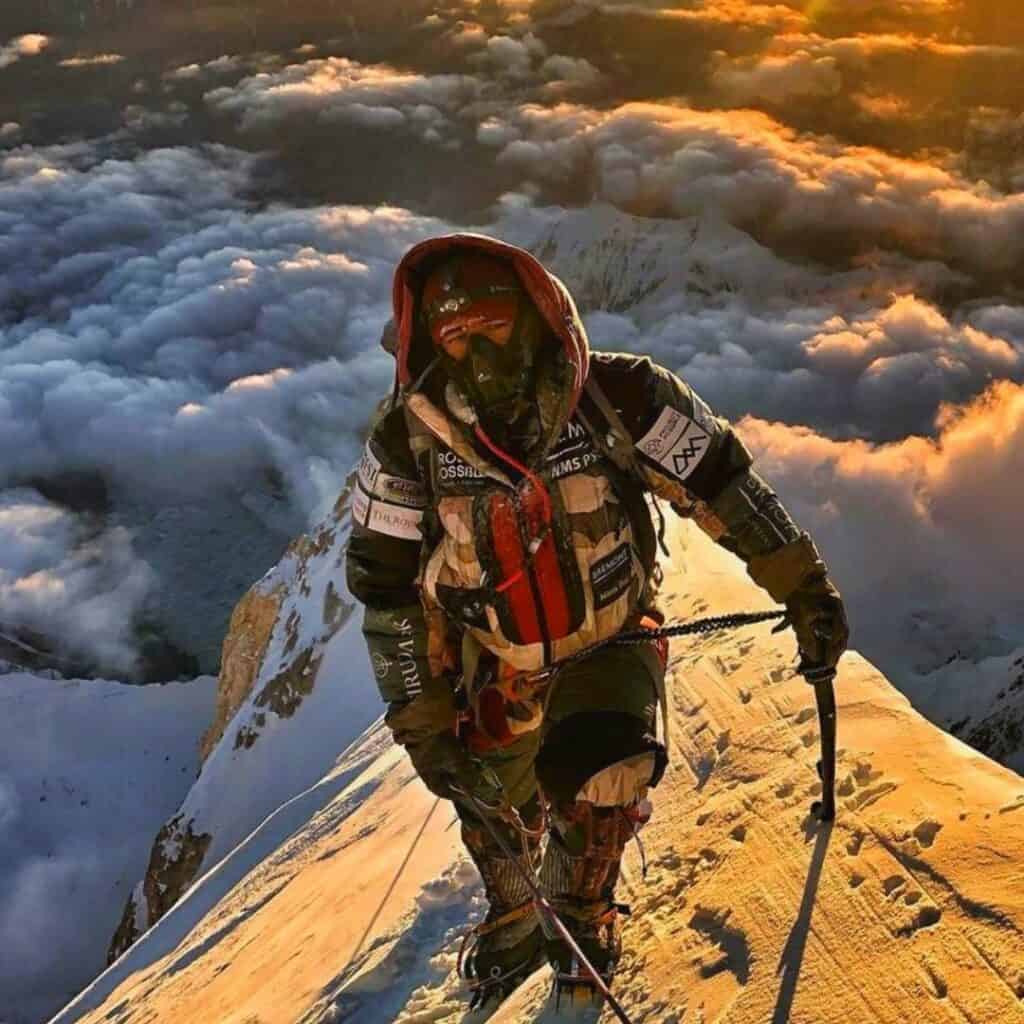
Nirmal “Nims” Purja is a Nepalese mountaineer who has made history with his incredible accomplishments in the world of high-altitude mountaineering.
Born in 1983 in Myagdi, Nepal, Purja served in the British military as a Gurkha soldier for over a decade before embarking on a career in mountaineering.
“People are only limited by their imagination.
If you don’t dream then you won’t do it.
Human beings are capable of doing amazing things.”
-Nirmal Purja
Purja first gained international recognition for his role in a 2016 expedition to climb all 14 peaks over 8,000 meters in just six months, breaking the previous record of seven years.
In 2019, he shattered his own record by climbing all 14 of the world’s highest peaks in just six months and six days, an incredible feat that earned him worldwide recognition and admiration. This was captured and featured in the popular movie 14 Peaks: Nothing is Impossible.
8. George Mallory
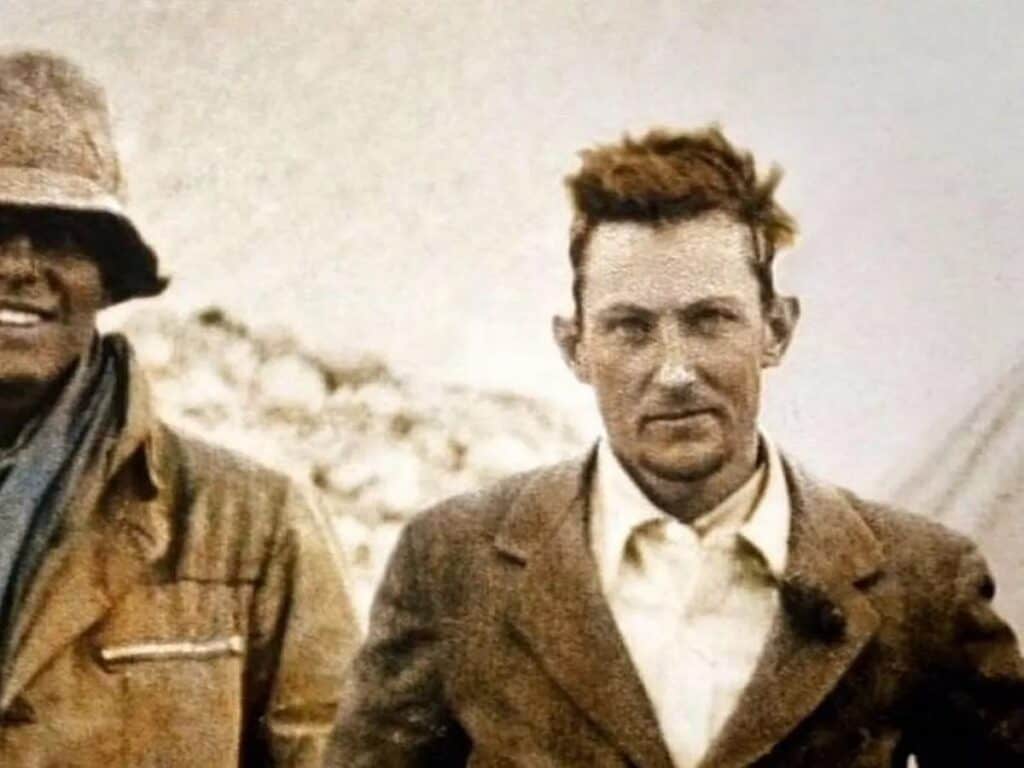
George Mallory was a British mountaineer who is perhaps best known for his attempts to climb Mount Everest in the 1920s.
Born in 1886 in Cheshire, England, Mallory was a gifted athlete and scholar who became fascinated with mountaineering as a young man. He made several notable climbs in the Alps and other ranges before joining the British expeditions to Everest in 1921, 1922, and 1924.
“Why climb Everest? Because it’s there.”
-Geroge Mallory
Although Mallory and his climbing partner, Andrew Irvine, did not reach the summit of Everest on their ill-fated 1924 expedition, their attempt remains one of the most iconic and mysterious events in mountaineering history. His body was found in 1999. He was buried on the mountain.
Mallory’s response to a reporter’s question about why he wanted to climb Everest, “because it’s there,” has become a famous quote that embodies the spirit of mountaineering.
9. Kami Rita Sherpa
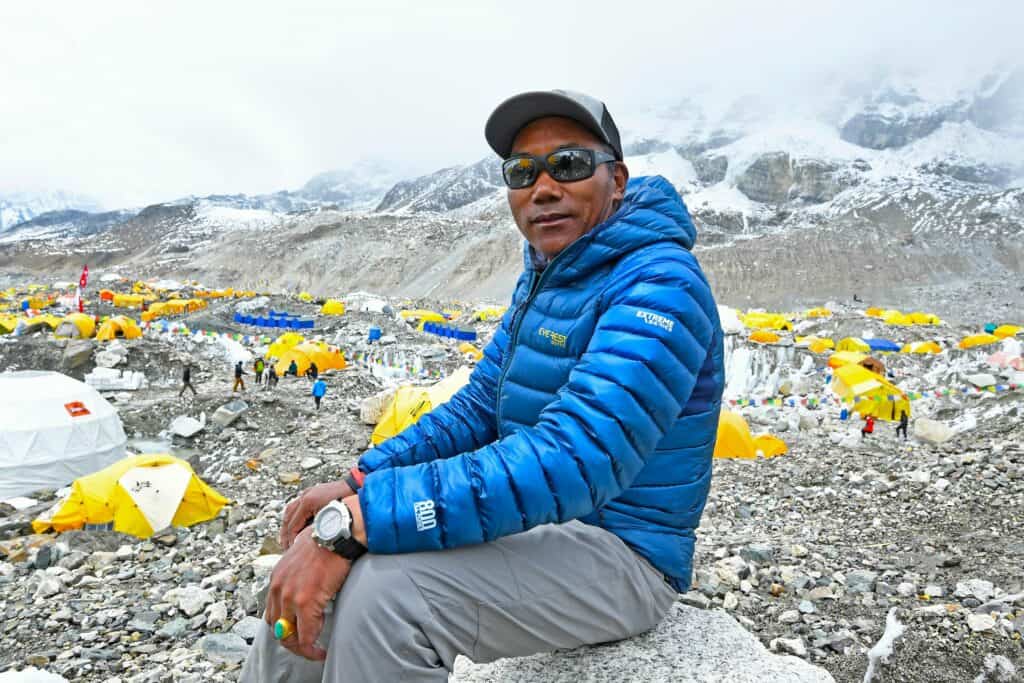
Kami Rita Sherpa is a Nepalese mountaineer. Born in the village of Thame in the Solukhumbu district of Nepal, Kami Rita is one of the most experienced climbers in the world, with over 25 years of experience climbing in the Himalayas.
As of 2024, he has successfully summited the mountain a record-breaking 30 times.
In addition to his record-breaking achievements on Mount Everest, Kami Rita has also climbed many other peaks in the Himalayas, including several peaks over 8,000 meters such as Cho Oyu, Lhotse, and Manaslu. He has also climbed other notable peaks such as Ama Dablam and Baruntse.
He earned the prestigious Tenzing Norgay National Adventure Award from the President of India in 2018. He has also been recognized by the government of Nepal and the Nepalese Mountaineering Association for his contributions to mountaineering.
10. Junko Tabei
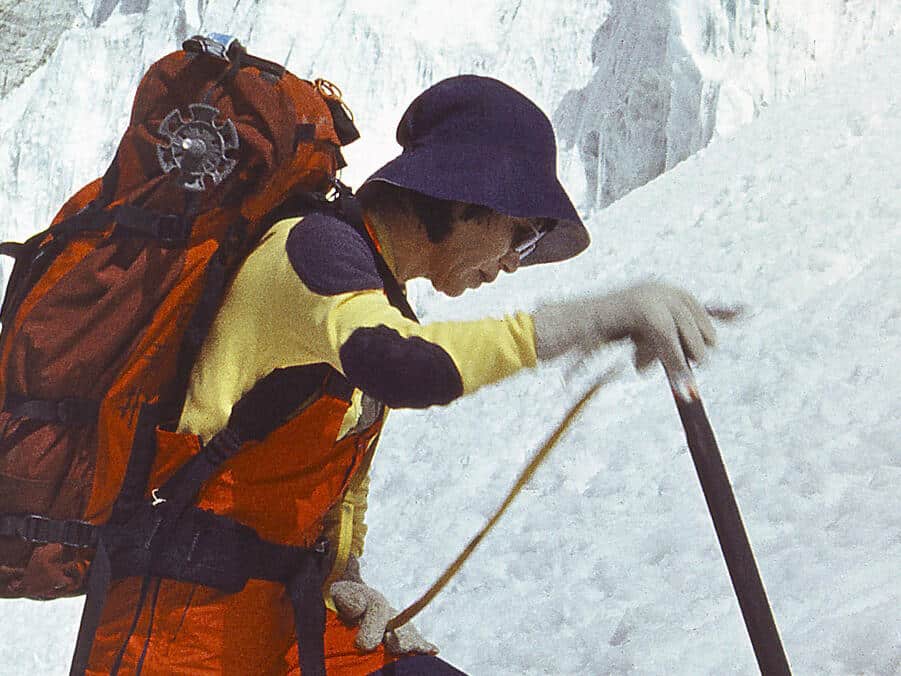
Junko Tabei was a Japanese mountaineer who became the first woman to reach the summit of Mount Everest in 1975.
Born in 1939 in Fukushima Prefecture, Japan, Tabei began mountain climbing as a university student. Despite facing cultural barriers and discrimination as a woman in a male-dominated sport, Tabei persevered and became a pioneer for women’s mountaineering.
“Technique and ability alone do not get you to the top;
it is the willpower that is the most important.”
-Junko Tabei
In addition to her historic ascent of Everest, Tabei made numerous other notable climbs during her career, including the first ascent by a woman of several other high-altitude peaks. She was also a tireless advocate for environmental causes and worked to promote mountaineering and outdoor recreation for women and children.
11. Ueli Steck
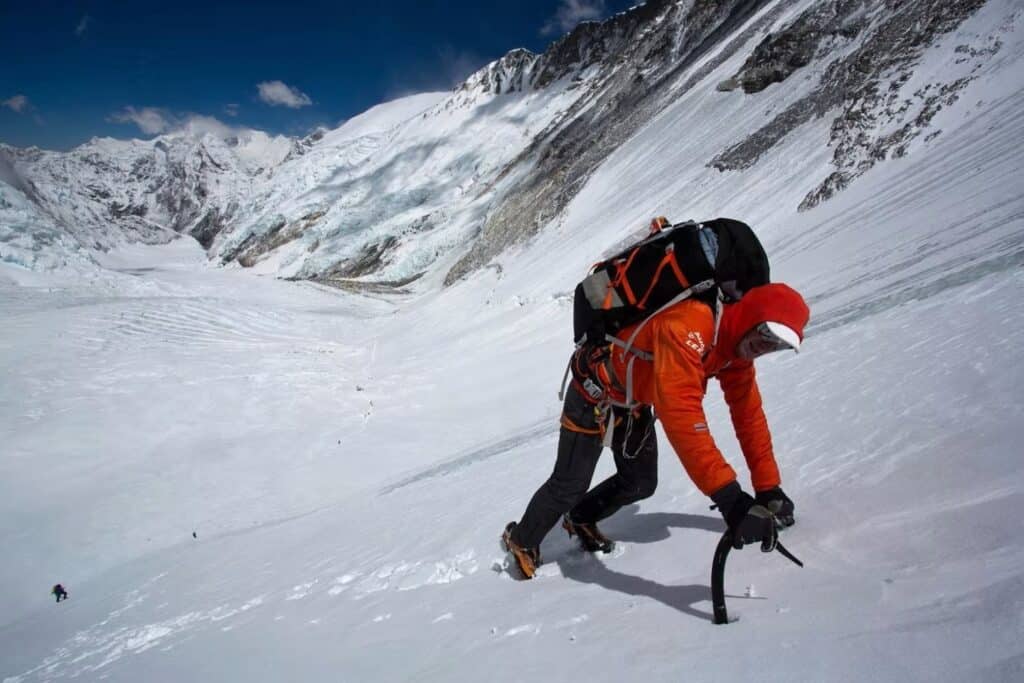
Ueli Steck was a Swiss alpinist who was known for his speed and efficiency in the mountains.
Born in 1976 in Langnau im Emmental, Switzerland, Steck began climbing as a teenager. He was particularly renowned for his ability to move quickly and efficiently over technical terrain, earning him the nickname “the Swiss Machine.”
Steck’s accomplishments included numerous speed records on iconic peaks such as the Eiger, Matterhorn, and Grandes Jorasses. He also made several groundbreaking ascents, including a solo ascent of Annapurna’s south face in 2013.
Tragically, Steck died in a fall while acclimatizing for an Everest-Lhotse traverse in 2017, but his legacy as one of the greatest alpinists of all time continues to inspire climbers around the world.
12. Ed Viesturs
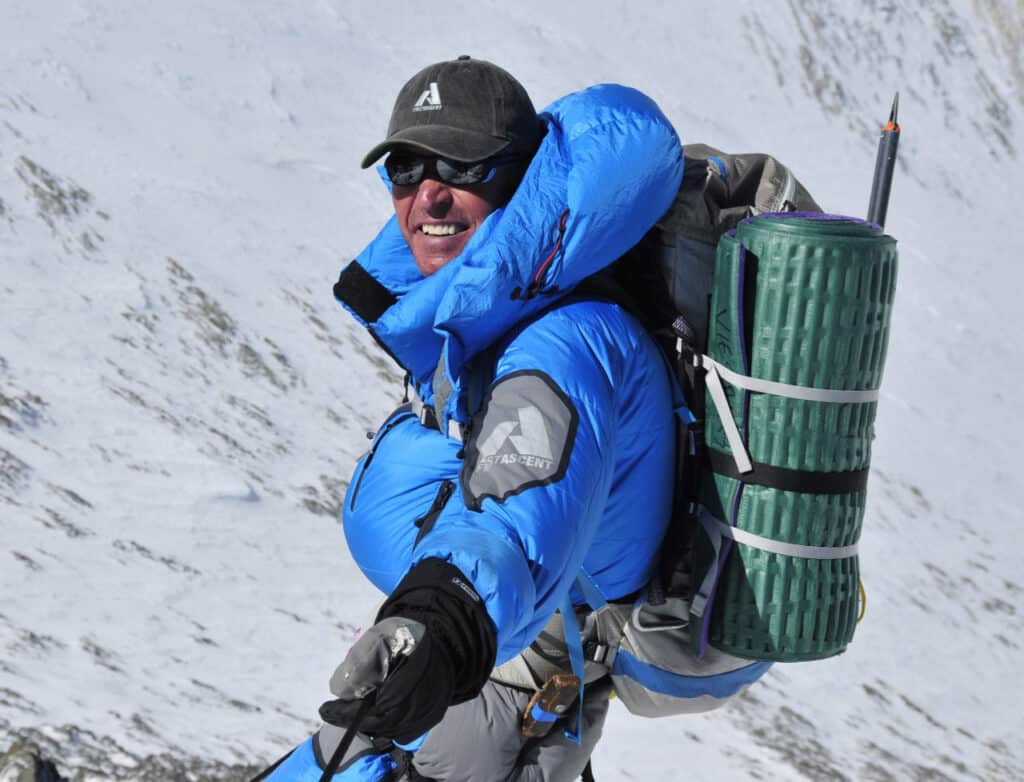
Ed Viesturs is an American mountaineer known for his incredible feats of endurance and skill in high-altitude mountaineering.
Born in 1959 in Fort Wayne, Indiana, Viesturs is one of only a handful of climbers to have successfully summited all 14 of the world’s peaks over 8,000 meters, without the use of supplemental oxygen. This incredible feat, known as the “8000ers,” took him over 20 years to accomplish and required incredible endurance, skill, and perseverance.
“The mountain decides whether you climb or not.
The art of mountaineering is knowing when to go, when to stay, and when to retreat.”
-Ed Viesturs
In addition to his accomplishments on the 8000ers, Viesturs has also climbed many other notable peaks around the world, including Denali in Alaska, which he has summited seven times, and the Eiger in Switzerland. He is also an accomplished author and public speaker, writing “No Shortcuts to the Top” and “The Mountain: My Time on Everest.”
Viesturs was inducted into the American Mountaineering Hall of Fame and won the David A. Sowles Memorial Award.
Conclusion
The world of mountaineering has produced many extraordinary individuals who have pushed the boundaries of what is possible and inspired generations of climbers to follow in their footsteps.
Each of these 12 renowned mountaineers has made a significant contribution to the sport. Their stories remind us of the power of human determination in the face of seemingly insurmountable challenges.
While mountaineering is often considered a solitary pursuit, we should remember that these climbers did not achieve their goals alone. They were supported by teammates, guides, and a community of climbers who shared their passion for the sport.
Mountaineering is a collaborative effort, and it is this sense of camaraderie and shared purpose that makes it such a special and rewarding pursuit.





















































